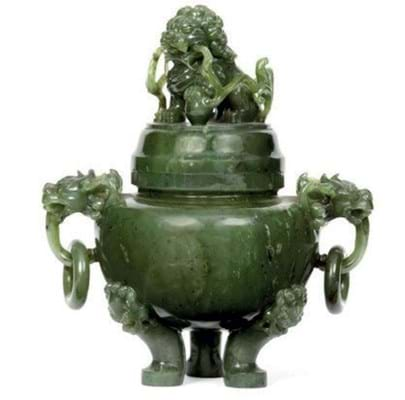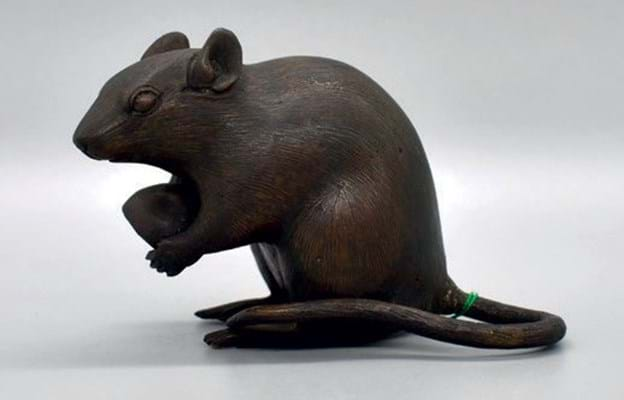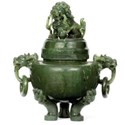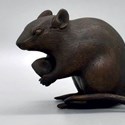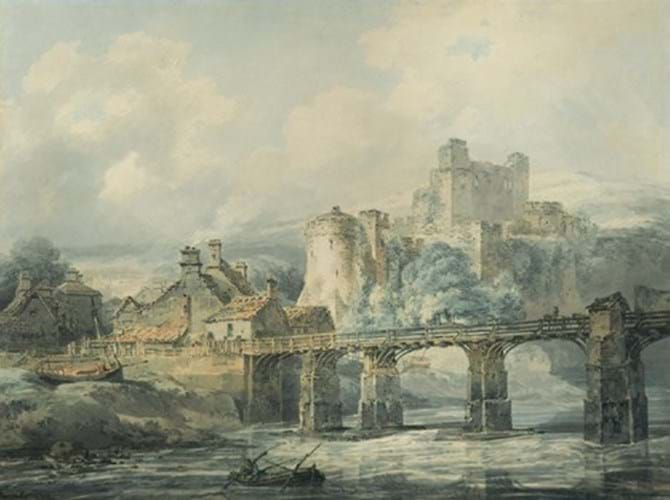
Chepstow Castle on the river Wye, Monmouthshire, Wales, a watercolour by JMW Turner, £75,000 at Cheffins and bought by MonLife Heritage.
Turner watercolour returns to Chepstow
An early watercolour of Chepstow Castle by JMW Turner (1775-1851) has returned to Chepstow after fundraising by local museums.
The 12¼ x 16½in (31 x 42cm) picture, signed and dated 1794, was painted by Turner when he was just 19 years old, on his first tour of south Wales.
Against an estimate of £30,000-50,000, it sold on March 22 at Cheffins for a hammer price of £75,000 (plus 29.4% buyer’s premium inc VAT). It came from a London-based vendor descended from George Cock Gibson (1896-1989) in whose family it had been since at least 1956. It was previously at auction at Christie’s in 1917.
It was bought at Cheffins by MonLife Heritage (operator of six heritage sites in the area) thanks to funding from various sources. It is now on display at Chepstow Museum.
Trade alert after Kensington theft
JAN Fine Art has urged the art and antiques trade to be aware of two thefts made at its Kensington Church Street, London, premises.
On Saturday, July 22 a person entered the shop during opening hours and removed a Chinese 19th century spinach green jade censer from a glass cabinet as well as a Japanese Meiji period bronze model of a mouse with a nut, which was displayed on a stand.
CCTV in the gallery records a man placing the mouse with its stand into his jacket pocket, followed by the censer.
On July 26, according to Kikue Shimizu of JAN, a man thought to be the same person attempted to take items from a different shop on Kensington Church Street and was arrested. However, the stolen items have not been found.
Anyone with information should contact the Met Police by calling 101 quoting incident reference number 5613656/23 or contact Crimestoppers anonymously on 0800 555 111.
Appeal aims to conserve tapestries
The Society of Antiquaries of London is embarking on a campaign to conserve Kelmscott Manor’s Samson tapestries.
The Grade I-listed 16th and 17th century house in the vi l lage of Kelmscot t , Oxfordshire, is the former country home of William Morris and his family. It is now owned by the society.
The four 17th-century Dutch tapestries depicting the Life of Samson are rare survivors of what was in the house prior to Morris arriving. Originally a bedroom, the Tapestry Room was used by him as both a workspace and sitting room.
The Society of Antiquaries plans to return the room to what it looked like when Frederick Evans photographed the interiors of Kelmscott Manor in 1896. (Morris and Dante Gabriel Rossetti took on the joint tenancy of Kelmscott Manor in 1871.)
The society needs £300,000 to conserve the tapestries in sequence and re-hang them configured as they were during Morris’ time. One third of this has already been secured.
Martin Levy of dealership H Blairman & Sons, who is chairman of the Kelmscott Campaign Group, said: “The importance of returning the Tapestry Room to its original state cannot be overstated. William Morris used the room as his principal workspace as did, later, his daughter May.”
For more details visit kelmscottmanor.org.uk.
Seal secured after successful bid
A rare medieval seal matrix that was found by a metal detectorist in a field and offered at auction will now go on display at its original home.
The National Trust ’s Mottisfont priory in Hampshire purchased the matrix at TimeLine Auctions on February 22 last year for a hammer price of £2800 (or £3640 including fees).
Made of cast copper-alloy, it dates to 1470-1520 and was found by a metal detectorist just two miles away in the parish of Lockerley, which had been the site of a former medieval market. It was probably taken there by a canon hoping to sel l indulgences when Mottisfont was an important Augustinian priory and a site of pilgrimage.
The finder chose to offer the matrix at auction and notified the National Trust of their plan so it could prepare for the sale.
The carved mould measures just 2.5 x 1.5in (6 x 4cm).
The seal matrix is inscribed in Latin with sigillu[m] officii prioris p[ri]oretas sce trinitat[is] de Motesfont, which means ‘Seal of the Official of the Prior of the Priory of Mottisfont’.
It features a carved depiction of the Trinity and a figure of a praying cleric, probably Mottisfont’s prior or another member of the community.
Most read
The most clicked-on stories for week July 20 to August 2 on antiquestradegazette.com
1 Dealer calls on trade and public to aid recovery of stolen Asian art
2 Plea to help trace missing necklaces
3 Huge archive of slides takes 40 times the top estimate
4 Rare medieval seal matrix bought at auction returns home after 500 years
5 Stunning Suzanne Belperron brooch stars in our pick of five auction highlights
In Numbers
£2m-3m
The estimate for Freddie Mercury’s Yamaha G2 grand piano. Bought in 1975 and imported to England from Japan, it was the instrument he used to compose Bohemian Rhapsody that same year.
Last week Sotheby’s Bond Street opened the doors on a month-long viewing for its sale Freddie Mercury: A World of His Own. Across six auctions, it will offer Mercury’s art, fashion, musical instruments, personal papers, possessions and photographs, furniture, and jewels, collected over the course of his life.
The Yamaha G2 was a late addition to the roster of Queen-related treasures on offer next month.

